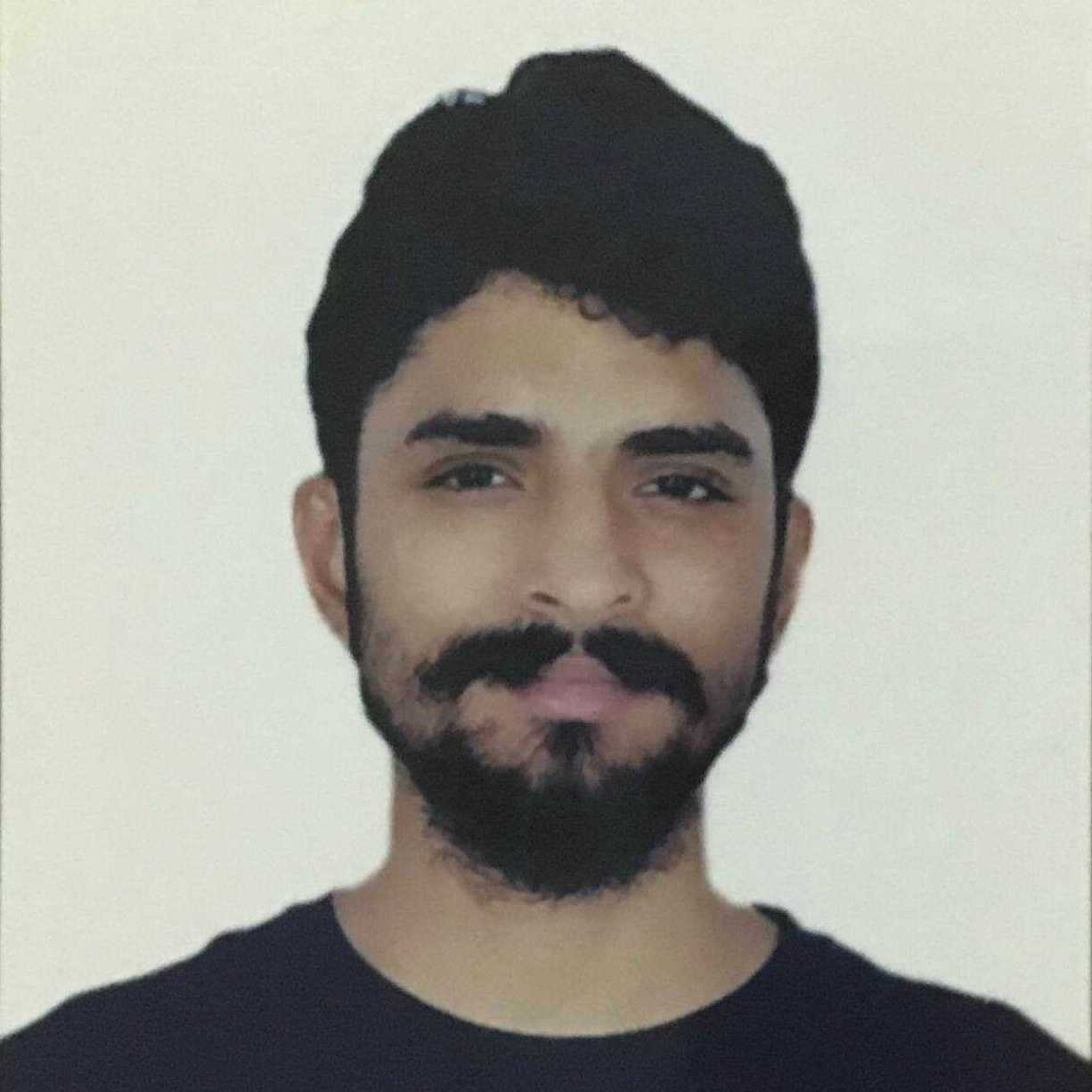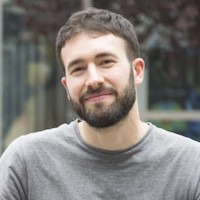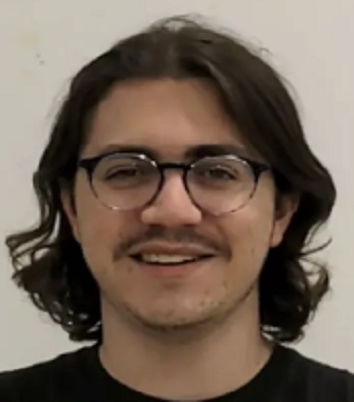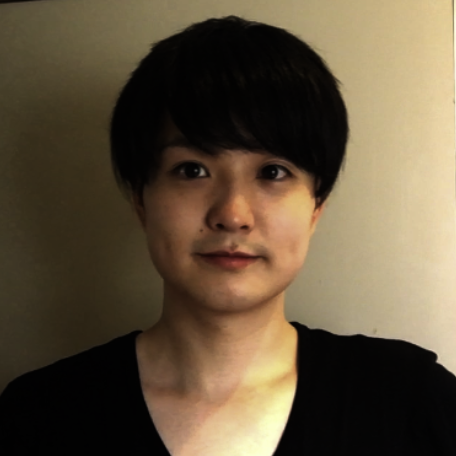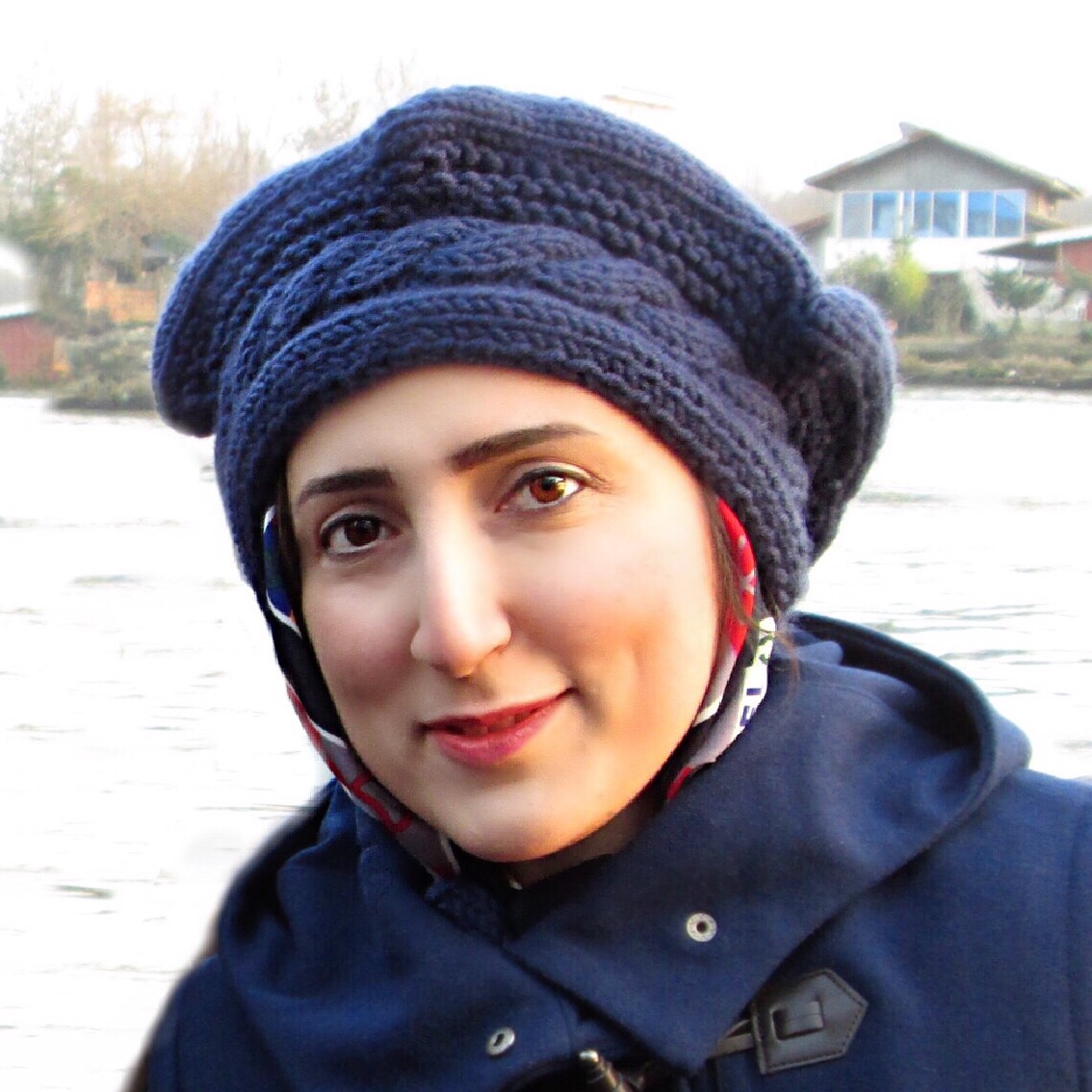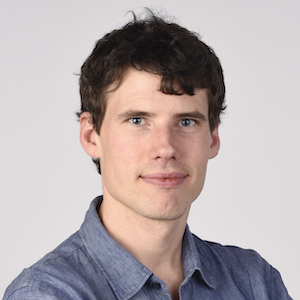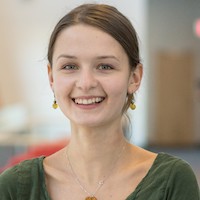Conference, Workshop,
Seminar (Those written in Japanese were presented in Japanese.)
■ 2023
巽 一厳 , 松浦 直人 , 山田 武 , 川北 至信 , 島崎 秀昭.中性子準弾性散乱解析への可変幅カーネル密度推定の適用 日本中性子科学会 札幌 link POSTER
石原憲*, 島崎秀昭.非定常・非対称な機能的結合の推定に基づく神経スパイク活動の不可逆性の検証.東京大学 本郷キャンパス 2023年9月5日 POSTER
島崎秀昭.神経符号化研究の歴史と最前線.第33回 日本神経回路学会全国大会 サテライトシンポジウム 「理論と実験の融合のための神経科学チュートリアル」 東京大学 本郷キャンパス 2023年9月3日 link LECTURE
Hideaki Shimazaki. Introduction to computational theories of the brain: from the efficient coding hypothesis to the Bayesian brain and free energy principle.The 46th Annual Meeting of the Japan Neuroscience Society (NEURO2023), Sendai, Japan. 2023 Aug 4 link INVITED LECTURE (In Japanese)
Deciphering hidden circuits from higher-order statistics of neural activity CSN Virtual Seminars at Julich Research Center, Online Jul 5, 2023 link
石原憲*, 島崎秀昭.状態空間–キネティックイジングモデルによる非平衡神経スパイク時系列 の解析ニューロコンピューティング研究会 沖 縄 2023年7月1日 TALK
島崎秀昭.大脳皮質局所回路の結合推定と符号化方式.第37回 全脳アーキテクチャ勉強会 オンライン 2023年2月17日 INVITED TALK link
Ken Ishihara, Hideaki Shimazaki. Analysis of nonequilibrium neuronal dynamics by the state-space kinetic model. Winter Workshop on Mechanism of Brain and Mind 2023. Rusutsu, Japan. Jan 6, 2023 link POSTER
■ 2022
島崎秀昭.脳の認識のダイナミクスと時間遅れ.2022年度 RIMS 共同研究(公開型)「時間遅れ系と数理科学:理論と応用の新たな展開に向けて」 京都大学数理解析研究所 2022年11月17日 link
島崎秀昭.神経活動の高次統計量から回路構造を読み解く.日本神経回路学会 オータムスクールASCONE2022 グランポート木更津, 千葉 2022年11月14日 link
島崎秀昭.脳の自由エネルギー原理:背景と応用. 応用脳科学コンソーシアム アドバンスコース「脳に学ぶAI」 2022年9月9日 NTTデータ経営研究所, 東京 link
島崎秀昭.神経細胞集団活動の数理とデータ解析.日本応用数理学会2022年度年会. 2022年9月8日 北海道大学 link
Hideaki Shimazaki. Consciousness and the thermodynamics of the Bayesian brain. International Symposium on Artificial Intelligence and Brain Science 2022, Jul 5, 2022 link
Ken Ishihara, Hideaki Shimazaki. The state-space kinetic Ising model for nonequilibrium neuronal dynamics. NEURO2022, Jul 2, 2022
Hideaki Shimazaki, Ken Ishihara, Ulises Rodriguez Dominguez, Sai Sumedh Hindupur, Miguel Aguilera, S. Amin Moosavi, Magalie Tatischeff, Jimmy Gaudreault, Christian Donner. State-space analysis for neural population dynamics. Neuro2022, Jun 30, 2022
■ 2021
島崎秀昭.標準リカレントネットワークモデルでつなぐ皮質回路の構造・機能・作動原理. 大脳皮質を中心とした神経回路: 構造と機能、その作動原理. 令和3年度生理学研究所研究会 2021年12月3日 岡崎カンファレンスセンター INVITED TALK link
Miguel Aguilera*, S. Amin Moosavi, Hideaki Shimazaki. An information geometry approach for unifying mean field theories of asymmetric kinetic Ising systems. Entropy 2020: The Scientific Tool of the 21st Century May 7, 2021. Online. *TALK link
島崎秀昭.非定常・非平衡イジングモデルによる神経細胞集団活動の解明. データ駆動生物学ワークショップ. MACS教育プログラム(京都大学 理学研究科)2021年3月23日 オンライン INVITED TALK link
Safura Rashid Shomali*, S. Nader Rasuli,
Hideaki Shimazaki. Revealing hidden microcircuits using higher-order interactions of neuronal activity. The 3rd Sharif Neuroscience Symposium Mar 4, 2021. Online *TALK
島崎秀昭.脳への計算論的アプローチ概説: 視覚野の理論を中心に.日本視覚学会2021年冬季大会 企画セッション「視覚・脳科学への計算論的アプローチの最前線」 2021年1月21日 オンライン INVITED TALK link
■ 2020
Safura Rashid Shomali, Seyyed Nader Rasuli, Hideaki Shimazaki. Higher-order interactions induced by strong shared inputs. 29th Annual Computational Neuroscience Meeting: CNS*2020. Dec 21 BMC Neuroscience 2020, 21(Suppl 1): P185 link
島崎秀昭.ヒストグラム・カネール密度推定の最適化法の紹介.先進計算環境関連研究会 J-PARC 中性子散乱への情報科学の応用 2020年10月14日 オンライン INVITED TALK
島崎秀昭.神経活動の数理モデリングで回路・情報,そして意識へ迫る. CHAIN セミナー 2020年8月3日 オンライン TALK link
Seyedamin Moosavi, Magalie Tatischeff, Bingyue Zhu, Hideaki Shimazaki. Effects of structured neural correlations in population coding: beneficial or detrimental? Computational and Systems Neuroscience (Cosyne) 2020. Feb 27 - Mar 1. Dember, USA POSTER
Safura Rashid Shomali, Majid Nili Ahmadabadi, Seyyed Nader Rasuli, Hideaki Shimazaki. Inferring network motifs from neural activity using analytic input-output relation of LIF neurons.Computational and Systems Neuroscience (Cosyne) 2020. Feb 27 - Mar 1. Dember, USA POSTER
Hideaki Shimazaki. Thermodynamics of the Bayesian brain: A new paradigm for quantifying perceptual capacity of neural dynamics. Computational Principles in Active Perception and Reinforcement Learning in the Brain. Feb 13-14, 2020. Kyoto University. INVITED TALK link
Hideaki Shimazaki. The brain as an information-theoretic engine: A new paradigm for quantifying perceptual capacity of neural dynamics. Combining Information theoretic Perspectives on Agency. Jan 28-29, 2020. The University of Tokyo, Japan. INVITED TALK link
■ 2019
島崎 秀昭. 脳の理論の過去・未来:ベイズ脳仮説からニューラルエンジンへ. シンギュラリティサロン東京.大手町サンケイプラザ 2019年12月7日TALK link
島崎 秀昭. 脳の理論の過去・未来:ベイズ脳仮説からニューラルエンジンへ シンギュラリティサロン大阪.グランフロント大阪・ナレッジサロン・プレゼンラウンジ 2019年11月16日 TALK link
Hideaki Shimazaki*. Dynamic neural interactions revealed by the state-space Ising model. The 7th International Congress on Cognitive Neurodynamics. Sep 29. Alghero, Italy. TALK link
Safura Rashid Shomali*, Majid Nili Ahmadabadi, Seyyed Nader Rasuli, Hideaki Shimazaki
Judging between Excitation and Inhibition: Identifying Local Network Architecture by an Analytic Pre-Post Relation. Bernstein Conference 2019. Sep 18, Berlin, Germany. POSTER link
Miguel Aguilera*, Amin Seyed Moosavi, Hideaki Shimazaki. Unifying framework for mean field theories of asymmetric kinetic Ising systems . 15th Granada Seminar on Computational and Statistical Physics: Stochastic and Collective Effects in Neural Systems. Sep 17. Universidad de Granada, Spain. TALK link
島崎 秀昭. 学習と認識の熱力学:ニューラルエンジンとはなにか? 生理研研究会2019 認知神経科学の先端 「脳の理論から身体・世界へ」 岡崎 2019年9月2日 TALK
Hideaki Shimazaki. Visualizing dynamics of cooperative activities of neurons for neural coding studies. Data Science, Statistics, & Visualisation (DSSV2019) Aug. 13. Doshisha University, Kyoto, Japan. TALK link
島崎 秀昭. 神経細胞集団活動の統計解析:脳の熱力学に向けて. サロン・ド・脳. 京都大学 2019年6月7日 TALK
Hideaki Shimazaki. Network architecture underlying sparse neural activity characterized by structured higher-order interactions. Okinawa Institute of Technology (OIST). Okinawa, Japan. Mar 26 2019 TALK link
S. Amin Moosavi, Hideaki Shimazaki. Role of gain-control and neural correlations in efficient stimulus coding. Consciousness Research Network (CoRN 2019) Okazaki, Japan. Feb 23 2019 POSTER
Magalie Tatischeff, Jimmy Gaudreault, Christian Donner, Hideaki Shimazaki. Thermodynamic analysis of neural populations by the state-space Ising model. Consciousness Research Network (CoRN 2019). Okazaki, Japan. Feb 23 2019 POSTER
■ 2018
Hideaki Shimazaki, Magalie Tatischeff, Jimmy Gaudreault, Christian Donner. Thermodynamic analyses of neural populations. Analysis and Synthesis for Human/Artificial Cognition and Behaviour, A satellite workshop of JNNS2018. Okinawa Institute of Science and Technology Graduate University. Oct 22, 2018 POSTER link
Jimmy Gaudreault and Hideaki Shimazaki. State-space analysis of an Ising model reveals contributions of pairwise interactions to sparseness, fluctuation, and stimulus coding of monkey V1 neurons. The 27th International Conference on Artificial Neural Networks (ICANN2018) Oct 5, 2018 POSTER
島崎秀昭 スパースな集団活動を生み出す神経ネットワーク構造. 大規模ネットワーク上のイベント生起ダイナミクスの予測と制御 軽井沢 2018年7月6日 TALK link
Jimmy Gaudreault, Arunabh Saxena, Hideaki Shimazaki. State-space analys of an Ising model reveals contributions of pairwise interactions to sparseness, fluctuation, and stimulus coding of monkey V1 neurons. 脳と心のメカニズム第17回冬のワークショップ 北海道 2018年1月9日 POSTER
■ Seminar,
Conference, Workshop in 2017
Shimazaki H. Network architectures underlying variable, sparse population activity of neurons. Fluctuations of event occurrences in a variety of networks. Kyoto, Japan. Nov 15, 2017 TALK link
島崎秀昭 神経細胞集団活動の統計数理 玉川大学脳科学ワークショップ 石和温泉 2017年9月28日 TALK (Invited)
Makio Torigoe, Islam Tanvir, Hisaya Kakinuma, Hideaki Shimazaki, Chi Chung Alan Fung, Tazu Aoki, Tomoki Fukai, Hitoshi Okamoto In-vivo imaging of telencephalic neural activities in adult zebrafish performing decision making task in the closed-loop virtual reality environment. Annual Meeting of the Japan Neuroscience Society (Neuro2017). Makuhari Messe, Japan. Jul 23 2017. TALK by Torigoe
島崎秀昭 神経活動データの時系列モデリング入門 第8回脳科学若手の会合宿 ホテルウィングインターナショナル相模原 2017年3月4, 5日 Lecture (Invited)
■ 2017
Shimazaki H. Network architectures underlying variable, sparse population activity of neurons. Fluctuations of event occurrences in a variety of networks. Kyoto, Japan. Nov 15, 2017 TALK link
島崎秀昭 神経細胞集団活動の統計数理 玉川大学脳科学ワークショップ 石和温泉 2017年9月28日 TALK (Invited)
Makio Torigoe, Islam Tanvir, Hisaya Kakinuma, Hideaki Shimazaki, Chi Chung Alan Fung, Tazu Aoki, Tomoki Fukai, Hitoshi Okamoto In-vivo imaging of telencephalic neural activities in adult zebrafish performing decision making task in the closed-loop virtual reality environment. Annual Meeting of the Japan Neuroscience Society (Neuro2017). Makuhari Messe, Japan. Jul 23 2017. TALK by Torigoe
島崎秀昭 神経活動データの時系列モデリング入門 第8回脳科学若手の会合宿 ホテルウィングインターナショナル相模原 2017年3月4, 5日 Lecture (Invited)
■ Seminar,
Conference, Workshop in 2016
Donner C. and Shimazaki H., Estimating dynamic functional networks of larger neural populations. Society for Neuroscience 2016. Nov 16, 2016 POSTER
Shomali S.R., Ahmadabadi M.N., Rasuli N. S., Shimazaki H., Exact analysis of spiketiming and higherorder interactions of neurons at the threshold regime suggests network architecture underlying sparse population activity. Society for Neuroscience 2016. Nov 14, 2016 POSTER
Donner C. and Shimazaki H., Large-scale inference of time-varying neural interactions. The 23rd International Conference on Neural Information Processing (ICONIP 2016). Kyoto, Japan. Oct 16, 2016 (Talk by Donner) EXCELLENT PAPER AWARD
MaBouDi H., Shimazaki H., Lars Chittka L. Modelling elemental learning of honeybees by spiking neural networks. EURBEE 2016. Cluj-Napoca, Romania. Sep 7, 2016 (Talk by MaBouDi)
Shimazaki H. Toward thermodynamic principles of consciousness. University of Sussex, UK. Jul 7, 2016. TALK
Shimazaki H. Higher-order interactions of neural populations. University College London, UK. Jul 5, 2016. TALK
Shimazaki H. Population coding of neurons: Dynamics, higher-order interactions, and mechanisms. Queen Mary University of London, UK. Jul 4, 2016. TALK
Shomali S.R., Ahmadabad M.N., Shimazaki H., Rasuli SN. Exact spike-timing distribution reveals higher-order interactions. CNS*2016. Jeju, South Korea. Jul 2, 2016 (Poster by Shomali) POSTER (Reviewed) links
島崎秀昭, Andrew J Peters, 小宮山尚樹, 豊泉太郎. Redundant spatiotemporal coding by layer 2/3 neurons of motor cortex during initial motor learning. 第17回ノンパラメトリック統計解析とベイズ統計 慶應義塾大学三田キャンパス 2016年3月29・30日 TALK
島崎秀昭 神経ネットワークの情報コーディング:ダイナミクス・高次相関・メカニズム. 第4回東工大若手物性セミナー 東京工業大学すずかけ台キャンパス 2016年2月18日 TALK (Invited)
島崎秀昭 動的イジングモデルを用いた神経回路網活動の解析 NS Forum 国際基督教大学 2016年2月2日 TALK (Invited)
島崎秀昭, Andrew J Peters, 小宮山尚樹, 豊泉太郎 Redundant coding by layer 2/3 neurons of motor cortex during initial motor learning. 脳と心のメカニズム 第16回冬のワークショップ 北海道ルスツ 2016年1月6,7,8日 POSTER [link]
■ Seminar,
Conference, Workshop in 2015
Christian Donner and Hideaki Shimazaki. Approximation methods for inferring time-varying interactions of a large neural population. NIPS 2015 Workshop on `Statistical Methods for Understanding Neural Systems'. Montreal, Canada. Dec 11, 2015 POSTER [link1, link2]
島崎秀昭 神経回路網活動の熱力学的考察 数理モデリング研究会 滋賀 2015年11月28,29日 TALK [link]
Shimazaki H. Simultaneous silence explains structured higher-order interactions of neural populations. Juelich Research Center. Juelich, Germany. May 5, 2015 Seminar TALK [link]
Shimazaki H. Simultaneous silence explains structured higher-order interactions of neural populations. Bernstein Center of Computational Neuroscience Berlin. Berlin, Germany. Apr 28, 2015 TALK [link]
島崎秀昭 Simultaneous silence explains structured higher-order interactions of neural populations. 第16回ノンパラメトリック統計解析とベイズ統計 慶應義塾大学 2015年3月25日 TALK
島崎秀昭 神経細胞の集団活動の高次統計とメカニズム 第3回ヘテロ・ニューロ・アナリシス研究会 玉川大学 2015年3月18日 TALK
■ Seminar,
Conference, Workshop in 2014
Thomas Sharp, Hideaki Shimazaki, Yoshikazu Isomura and Tomoki Fukai. State-space analysis of behaviour- and layer-dependent synchrony in motor cortex during volitional arm movement. Society for Neuroscience (SfN) 2014, Washinton DC, USA. Nov 16, 2014 POSTER
Thomas Sharp, Hideaki Shimazaki, Yoshikazu Isomura and Tomoki Fukai. Behaviour- and layer-dependent synchrony in motor cortex during volitional arm movement, Neuro2014, Yokohama, Japan. Sep 11, 2014 POSTER
Safura Rashid Shomali, Majid Nili Ahmadabadi, Hideaki Shimazaki, S Nader Rasuli. Theoretical study on spike-timing probability in a pair of pre-post synaptic neurons. Neuro2014, Yokohama, Japan. Sep 11, 2014 POSTER
Shimazaki H. Simultaneous silence explains structured higher-order interactions of neural populations. June 3 11:00-12:00 Place: CiNet 1F Conference Room A, TALK
Shimazaki H. Simultaneous silence explains structured higher-order interactions of neural populations. 京都大学セミナー, June 2 TALK
Tom Sharp*, Hideaki Shimazaki, Yoshikazu Isomura and Tomoki Fukai. Behaviour- and layer-dependent synchrony in motor cortex during volitional arm movement. Workshop on data mining in neuroscience. National Institute of Informatics, Tokyo, Japan. May 28-29, 2014 TALK
HaDi MaBouDi, Hideaki Shimazaki, Hamid Soltanian-Zadeh, Shun-ichi Amari. Bimodal Distributions of Local Phase Variables in Natural Images. The 2014 VSS Annual Meeting, St. Pete Beach, Florida. May 18, 2014 POSTER
HaDi MaBouDi, Hideaki Shimazaki, Mehdi Abouzari, Shun-ichi Amari, Hamid Soltanian-Zadeh, Statistical inference for directed phase coupling in neural oscillators. Computational and Systems Neuroscience (Cosyne) 2014. Feb 27 Salt Lake City, USA. POSTER
島崎秀昭. State-space analysis of higher-order interactions in parallel event sequences 第15回ノンパラメトリック統計解析とベイズ統計 慶応義塾大学三田キャンパス 2014�年3月19日 TALK
島崎秀昭. 高次相関を伴う神経回路網活動:局所回路の計算原理を求めて. 神経科学と統計科学の対話4. 統計数理研究所 2013年3月17日 TALK
Shimazaki H., Sadeghi K., Ikegaya Y., Toyoizumi T. Structured higher-order interactions explain the simultaneous silence of neural populations. 脳と心のメカニズム 第14回 冬のワークショップ 2014年1月8日(水)-10日(金) ポスター発表
島崎秀昭「留学という選択」 大学院留学・ポスドク留学・語学留学・サマースクールなど異なるタイプの留学についてお話します.また日本に来る留学生への対応や海外での講義体験などの国際交流についてもご紹介します.脳科学若手の会 2014年1月25日(日)
■ Seminar,
Conference, Workshop in 2013
Shimazaki H., Sadeghi K., Ikegaya Y., Toyoizumi T., The simultaneous silence of neurons explains structured higher-order interactions in ensemble spiking activity, SfN2013. POSTER
Shimazaki H., TBA, ELC International Meeting on ''Inference, Computation, and Spin Glasses'' (ICSG2013), Sapporo, Japan. July 28-30, 2013 TALK (Invited)
Shimazaki H., Higher-order interactions in population activity of hippocampal CA3 neurons, Workshop on statistical analysis of neurophysiological and clinical data, Kyoto, Japan. TALK
Shimazaki H., Estimating Time-varying Higher-order Neuronal Interactions in Awake Behaving Animals, Modeling Neural Activity: Statistics, Dynamical Systems, and Networks, Lihue, Hawaii, USA. 2013 June 26-28 TALK (Selected)
Shimazaki H., Sadeghi K., Ikegaya Y., Toyoizumi T., The simultaneous silence of neurons explains higher-order interactions in ensemble spiking activity, Neuro2013, Kyoto, Japan. Jun. 20 POSTER
Shimazaki H. Estimating dynamic neural interactions in awake behaving animals. The 3rd Mathematical Neuroscience Workshop in School of Mathematics, Institute for Research in Fundamental Sciences (IPM). Tehran, Iran. Mar. 13 TALK (Invited)
Shimazaki H. The Simultaneous Silence of Neurons Explains Higher-Order Interactions in Ensemble Spiking Activity. The 3rd Mathematical Neuroscience Workshop in School of Mathematics, Institute for Research in Fundamental Sciences (IPM). Tehran, Iran. Mar. 13 TALK (Invited)
島崎秀昭. 高次相関を伴う神経回路網の活動と情報コーディング 玉川大学脳科学若手の会 第88回談話会 Feb 22 TALK (Invited)
Shimazaki H., Sadeghi K., Ikegaya Y., Toyoizumi T. The simultaneous silence of neurons explains structured higher-order interactions in spontaneous spiking activity. 神経科学と統計科学の対話3. 統計数理研究所 Feb 18-19 TALK
■ Seminar,
Conference, Workshop in 2012
Shimazaki H., Kolia Sadeghi, Yuji Ikegaya, Taro Toyoizumi. Joint inactivation statistics of population spiking activities. RIKEN BSI Retreat 2012, Nov 12-13, Karuizawa, Japan
Shimazaki H. The simultaneous silence of neurons explains structured higher-order interactions in ensemble spiking activity. BSI Lunch Seminar 2012 Nov. 8
Shimazaki H., Kolia Sadeghi, Yuji Ikegaya, Taro Toyoizumi. Joint inactivation statistics of population spiking activities. Workshop on statistical aspects of neural coding. Nov 1-2. Kyoto University & Ritsumeikan University.
Shimazaki H. Tracking Dynamic Neural Interactions in Awake Behaving Animals. Workshop on neural information flow, Kyoto University, Kyoto Jun 20 2012 TALK (Invited)
島崎秀昭, 篠本滋. ヒストグラム・カーネル密度推定の神経スパイクデータへの適用:理論と実践 第13回ノンパラメトリック統計解析とベイズ統計 2012年3月29・30日 慶應義塾大学三田キャンパス TALK (Invited)
Shimazaki H., Kolia Sadeghi, Yuji Ikegaya, Taro Toyoizumi, The simultaneous silence of neurons explains higher-order interactions in ensemble spiking activity. Computational and Systems Neuroscience (Cosyne) 2012. Salt Lake City, USA. 2012 Feb 23-26 POSTER (Reviewed)
Shimazaki H. 非線形セミナー 神経細胞の高次スパイク相関:状態空間モデルによる解析. 京都大学理学部物理学第一教室 2012 Feb 2 TALK (Invited)
■ Seminar,
Conference, Workshop in 2011
島崎秀昭, 小山慎介. 神経スパイク解析における状態空間モデル,GLMの応用.
統計科学と神経科学の対話2 2011年 12月26-27日 [TALK,
Invited]
Shimazaki H., Amari S., Brown E. N., and
Gruen S. Dynamics of Higher-order Spike Correlation in an Awake
Behaving Monkey: Analysis by a State-space Model. RIKEN BSI
Retreat, Karuizawa, Japan. Oct 31 POSTER
Shimazaki H., Ikegaya Y., and Toyoizumi T. A
New Sparse Log-linear Model for Simultaneously Active and Inactive
Neurons. RIKEN BSI Retreat, Karuizawa, Japan. Oct 31 POSTER
Shimazaki H. and Brown
E.N. Copula-based Mixture Time-series Model of Continuous and
Point Processes for Synthetic Analysis of Neural Signals. RIKEN
BSI Retreat, Karuizawa, Japan. Oct 31 POSTER
島崎秀昭 脳の高次機能と動的高次スパイク相関:状態空間モデルによる解析, 統計神経科学ミニワークショップ 統計数理研究所 9月8日 [TALK,
Invited]
Shimazaki H. and Brown E. N. Constructing
a joint time-series model of continuous and Bernoulli/Poisson
processes using a copula Computational
and Systems Neuroscience 2011 Salt Lake City, USA. Feb 24-27 POSTER (Reviewed)
■ Seminar,
Conference, Workshop in 2010
Shimazaki H. Analysis of Dynamic Neural
Spike Data: From Firing Rates to Spike Correlations.
Neurostatistics Working Group Seminar, Dept. of Biostatistics,
Harvard University, Dec 1 [TALK, Invited] link
Shimazaki H. Detection of dynamic cell
assemblies by the Bayes Factor. Workshop
on spatio-temporal neuronal computation, Kyoto University,
Japan Sep 6-7 [TALK, Invited]
Shinomoto S*, Shimazaki H, and Shimokawa
T. Characterizing neuronal firing with the rate and the
irregularity. Neuro2010, Kobe, Japan Sep. 2 S3-10-1-3 [abst]
Shimazaki H., Gruen S., and Amari S.
Analysis of subsets of higher-order correlated neurons based on
marginal correlation coordinates. Cosyne
2010, Salt Lake City, USA. 1-63 Feb 25-28 [abst]
■ Seminar,
Conference, Workshop in 2009
Shimazaki H., Amari S., Brown E. N., and
Gruen S. State-space Model of Dynamic Spike Correlation. Japanese
Neural Network Society 2009. Sendai, Japan. Sept. 24-26. Talk+Poster [Japanese Neural Network Society
2009 Distinguished Research Award]
Shimazaki H. Analysis of Dynamic Spike
Data: From Spike Rate to Multiple Neuron Spike Correlation. The
6th Brain Lunch Seminar. RIKEN Brain Science Institute, Saitama,
Japan. Sep. 8. TALK
Shimazaki H., Amari S., Brown E. N., and
Gruen S. Bayes Factor Analysis for Detection of Time-dependent
Higher-order Spike Correlations. CNS2009
in Berlin, Germany. Jul 18-23 P99 POSTER [abstract]
Shimazaki H. and Shinomoto S. Histogram
binwidth and kernel bandwidth selection for the Spike-rate
estimation. CNS2009.
Berlin, Germany. Jul 18-23 P116 POSTER [abstract]
Shimazaki H., Amari S., Brown E. N., and
Gruen S. Estimating time-varying spike correlations from parallel
spike sequences, German-Japanese Workshop "Computational and
Systems Neuroscience", Berlin, May 25-28, 2009 POSTER
Shimazaki H., Amari S., Brown E. N., and
Gruen S. State-space Analysis on Time-varying Correlations in
Parallel Spike Sequences. IEEE
ICASSP2009 Special Session on `Signal Processing for Neural
Spike Trains', Taipei, Taiwan. Apr 24 SS-L10.4 [LECTURE (Invited)]
Shimazaki H., Amari S., Brown E. N., and
Gruen S. Detection of non-stationary higher-order spike
correlation. Cosyne
2009, Salt Lake City, USA. Feb 26 -Mar 3 POSTER II-62 [abstract]
■ Seminar,
Conference, Workshop in 2008
Shimazaki H., Amari S., Brown E. N., and
Gruen S. State-space Analysis on Time-varying Higher-order Spike
Correlations. NIPS2008 Workshop on `Statistical
Analysis and Modeling of Response Dependencies in Neural
Populations', Whistler, Canada Dec 13, 17:00-17:30 [abstract] [TALK (Invited)]
Shimazaki H. and Gruen S. Selecting a
state-space model of higher-order correlations in parallel spike
trains from competing hierarchical log-linear models. RIKEN
BSI Retreat 2008, Karuizawa, Japan. Nov 4-5 POSTER
Shimazaki H. and Gruen S. IBIS,
Sendai, Japan. Oct 29 Poster. in Japanese.
Shimazaki H. and Shinomoto S. Spike-rate
Estimation with Locally Adaptive Kernel Method . Japanese
Neural Network Society 2008. Sep 24-26 Tsukuba, Japan. PS3-4, p186-187  in Japanese. [Spotlight Poster] in Japanese. [Spotlight Poster]
Shimazaki H. Smoothing methods for spike
data: From single neurons rate estimation to multiple neurons
correlation analysis. Joint Journal Club at RIKEN BSI. Jun 17
Shimazaki H. and Gruen S. Estimating
time-dependent higher-order interactions in parallel spike trains. Neuro2008,
Tokyo, Japan. Jul
9-11 POSTER P1-w04 [abstract]
Shimazaki H., Brown E. N. and Gruen S.
State-space Analysis on Time-dependent Correlation in Parallel
Spike Trains. Statistical
Analysis of Neuronal Data (SAND4), Pittsburgh, PA, USA. May
29-31 POSTER [abstract]
■ Seminar,
Conference, Workshop in 2007
Shimazaki H. and Gruen S. Estimation of
Time-dependent Higher-Order Interactions in Parallel Spike Trains. Riken
BSI Retreat, Karuizawa, Japan. Nov 26-28 POSTER
Shimazaki H. and Shinomoto S. Kernel
Width Optimization in the Spike-rate Estimation. Neural
Coding 2007, Montevideo, Uruguay. Nov 7 POSTER [pdf] [Best Poster Award]
Shimazaki H. and Shinomoto S.
Optimization of a Histogram of Spike Data. Neuro2007, Yokohama, Japan. Sep 11 POSTER P2-k22
Shimazaki H. A Recipe for Optimizing a
Time Histogram of Spike Data. Riken
BSI Forums at RIKEN Brain Science Institute, Wako, Japan.
Host: Sonja Gruen Apr 17 TALK
Shimazaki H. A recipe for constructing a
Peri-stimulus Time Histogram. The
Boadian Seminar at Mind/Brain Institute, Johns Hopkins
University. Host: Ernst Niebur. Mar 1 TALK
Shimazaki H. and Shinomoto S. A recipe
for optimizing a time-histogram with variable bin sizes. Computational
and Systems Neuroscience 2007, Salt Lake City, Feb 22-27
POSTER
■ Seminar,
Conference, Workshop in 2006
Shimazaki H. and Shinomoto S. A recipe
for optimizing a time-histogram Neural
Information Processing Systems Dec 4-9, Whistler, B. C.
POSTER [pdf] [Spotlight Poster]
Shimazaki H. A method to optimize a time
histogram by correcting onset latencies of spike sequences Japanese
Neural Network Society JNNS2006 Sep 1-21 Nagoya, Japan O4-1
ORAL+POSTER [Japanese
Neural Network Society 2007 Young Researcher Award]
Shimazaki H. Self-organized criticality
by natural selection. Frontiers
in Dynamics: Physical and Biological Systems Tokyo, Japan,
May 22-24, 2006, Poster [abstract]
Shimazaki H. and Shinomoto S. Recipes for
constructing an optimal time histogram. Statistical
Analysis of Neuronal Data (SAND3), Pittsburgh, PA, May
12-13, 2006, Poster [abstract]
|
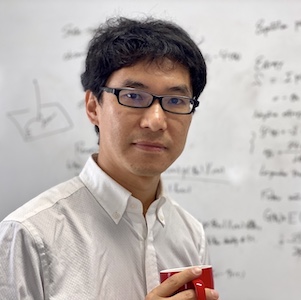
![]() i.kyoto-u.ac.jp
i.kyoto-u.ac.jp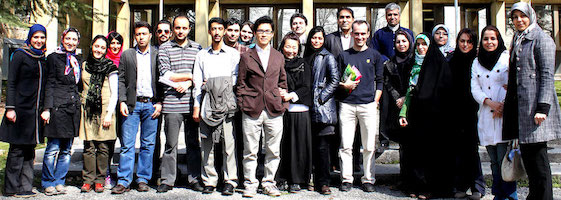

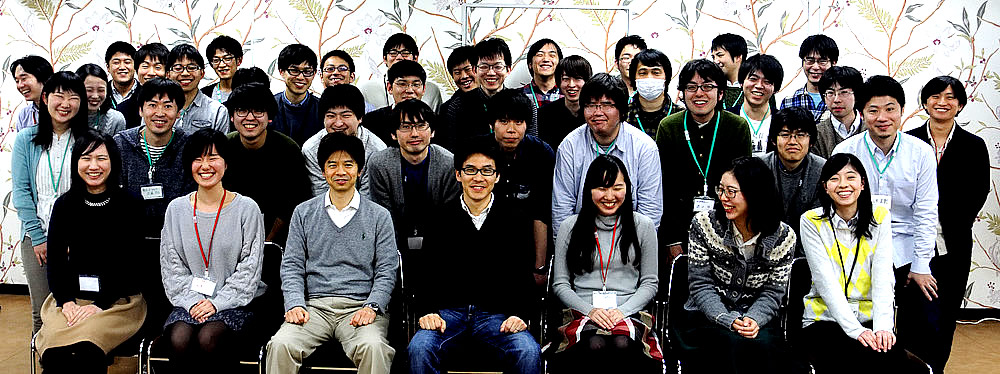
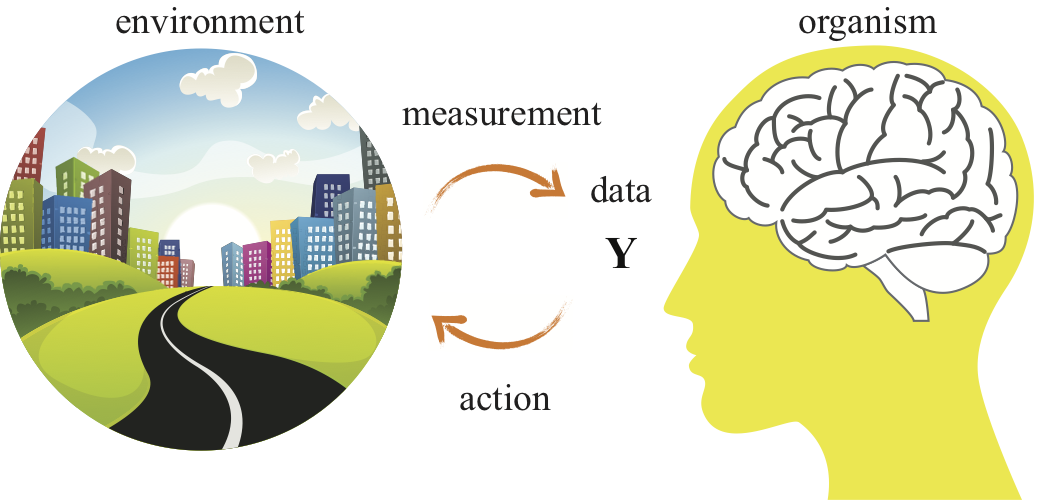 Humans and animals recognize the world and act on it for their survival. To understand how nervous systems realize this remarkable capacity, we need different levels of mathematical descriptions. These are (i) circuitries and mechanisms, (ii) statistics of neuronal activity and representation, and (iii) principles of computation and adaptation. Importantly, we need to understand how these different levels of descriptions are related. While the central approach of our lab is to analyze spiking data recorded from neurons using methods of machine learning and statistical physics, we broadly explore mathematical approaches to Neuroscience, from an attempt to theoretically define the adaptive principles of the brains to the realization of them by spiking networks.
Humans and animals recognize the world and act on it for their survival. To understand how nervous systems realize this remarkable capacity, we need different levels of mathematical descriptions. These are (i) circuitries and mechanisms, (ii) statistics of neuronal activity and representation, and (iii) principles of computation and adaptation. Importantly, we need to understand how these different levels of descriptions are related. While the central approach of our lab is to analyze spiking data recorded from neurons using methods of machine learning and statistical physics, we broadly explore mathematical approaches to Neuroscience, from an attempt to theoretically define the adaptive principles of the brains to the realization of them by spiking networks.

